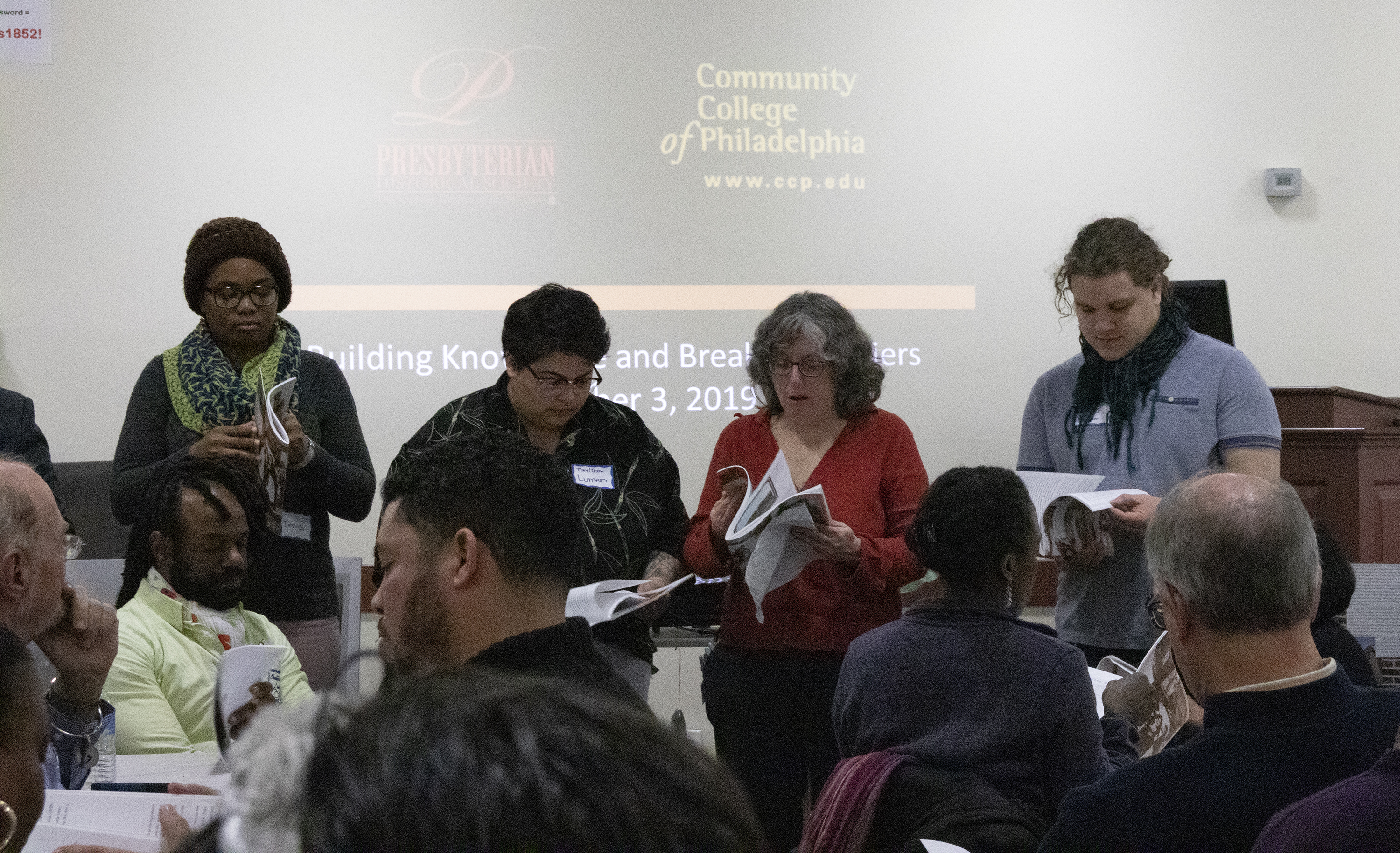--by Simone Zelitch, CCP Associate Professor of English
William Styron once wrote, “The historical novelist works best when fed on short rations.”
When I was approached to integrate archival material from PHS into a fiction-writing classroom, I knew that those short rations would lead my students’ work in surprising directions.
I worked with the society to gather materials that could be combined with a series of prompts. For example, students randomly chose a photograph of someone: missionaries, servants, tribal elders (an assortment selected by Jenny Barr presented to them as high-definition digital copies). The students stuck their hands into an envelope and pulled one photograph out. They had the option of turning those images over and finding out who these people were, but very few did so. Instead, their imaginations took over and they gave these strangers names, locations, and back-stories.

I said: this person you chose is opening a window in a way that tells you about their temperament, economic class, and ethics, and later (with a photograph of a location): here’s a place your character is running through, escaping from a disaster, or later (with a letter or official document ): your character just got this in the mail; write a response in their voice. The students responded to those prompts with engaged imaginations. In many cases knowing less about a photograph freed students to produce more. The fruits of their writing labor were included in a class-culminating fiction anthology, which you can view here.
What was most moving for the students was their opportunity to go to the archive itself, to discover that those photographs and documents came from somewhere real, and to learn that there are boxes and boxes of these artifacts, each one a real thing that can be transformed into fiction, poetry, or the other creative arts.
Learn More: Professor Perspectives
